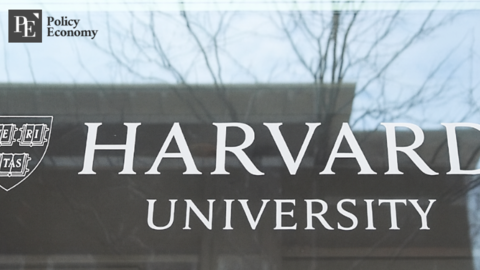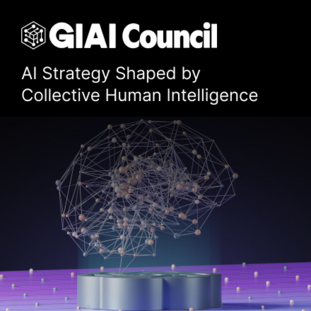Academic publishing could be facing a watershed moment
Input
Modified
Academic publishing is currently at a critical juncture. The imminent transformation of scholarly communications is indicated by the expiration of significant Transformative Agreements (TAs) by the end of 2025, the withdrawal of numerous UK universities from Elsevier's Read-and-Publish agreements, and the increasing criticism of the conventional subscription-based model. The global academic publishing landscape is enduring a substantial transformation as a result of the financial constraints that are tightening institutional budgets and the ongoing struggle of open access (OA) models to establish long-term sustainability.

The broader financial and structural issues that affect academic publishing are underscored by the decision of several UK universities, including Sheffield, to withdraw from Elsevier's Read-and-Publish agreements. The reevaluation of library expenses is a result of the sector-wide budget cuts that UK universities are currently experiencing. Sheffield allocated 30% of its content budget to significant publishing agreements, with Elsevier alone accounting for 12%. TAs were initially perceived as a means to transition to full open access; however, they have since become financially unsustainable. The OA transition has been halted, as indicated by Jisc's report on UK TAs. By 2024, it is anticipated that 25% of TA expenditures will be dependent on UKRI block grants. The value of subscription-based publishing models is being increasingly questioned by libraries. Alternative access strategies, including document delivery services, rights retention policies, and open repositories, are being investigated as cost-effective solutions.
Renegotiations or the potential collapse of the current big deal model may be initiated by the expiration of the main TAs with Elsevier, Wiley, Springer Nature, Taylor & Francis, and Sage by the end of 2025. The utilization of post-cancellation access rights, the expansion of open-access repositories and preprint servers, the strategic use of Article Processing Charges (APCs), and the limited resubscriptions to key journals are all strategies that institutions are currently experimenting to operate without traditional publisher agreements. Researchers are compelled to adjust to new content-access methods as a result of their departure from Elsevier's agreement. Institutional support is necessary to facilitate the implementation of these new access models. Historically, academic publishers have depended on the escalation of subscription fees. Publishers will be compelled to reevaluate their pricing and access models if numerous universities terminate these agreements. Publishers must either adjust to more transparent, cost-efficient pricing or face obsolescence, while institutions must determine the type of OA system they wish to support.
TAs were initially intended to serve as a transitional tool to complete OA publishing; however, they have evolved into a means for publishers to preserve their revenue streams. Despite the growing adoption of open access (OA), subscriptions continue to account for 80% of publisher revenue in the $11 billion academic journal market. Research institutions are still subjected to financial constraints as a result of subscription-based publishing. The introduction of TAs was intended to address the inefficiencies of hybrid OA models, which led to institutions paying twice—once for subscriptions and again for OA publication fees. The Max Planck Digital Library (MPDL) White Paper (2015) demonstrated that the current subscription allocations were adequate to facilitate the transition of journals to open access. Peter Suber (2012) had previously contended that research institutions do not require additional funding to support open access; rather, they must redirect existing resources. Institutions were able to ensure that research was accessible and maintain control over financial streams by incorporating OA publishing costs into library acquisitions.

The initial negotiations with publishers encountered significant resistance, as they were hesitant to consolidate subscription and OA costs into a singular budget under library control and relinquish control over distinct financial streams. Institutions in Germany, Sweden, Norway, Hungary, and the University of California have all canceled significant subscriptions as a result of this resistance. Publishers were compelled to recognize the changing power dynamics as a result of these cancellations, which granted libraries a larger advantage in negotiations. In order to prevent revenue losses, major publishers incorporated TAs into their business strategies by selling TAs as commercial products, shifting perceptions of TAs from an institution-driven initiative to a publisher-driven model, and maintaining fixed payments for access and OA publishing, which occasionally align with old subscription fees. Many libraries were skeptical of TAs at this juncture, as they believed they were reinforcing publisher dominance rather than disrupting the conventional publishing model.
Early TAs were successful in increasing OA content; however, they continued to rely on fixed pre-payment models that included lump sum fees, article limits, and legacy subscription costs that were incorporated into the agreements. This posed a risk of securing libraries in an evolved version of Big Deals, rather than allowing them to achieve full financial flexibility. In Sweden's Bibsam consortium negotiations, a novel approach is emerging that involves the transition from pre-paid article caps to post-payment models. This model involves institutions paying based on actual article output rather than pre-set quotas, the complete elimination of reading fees, and the alignment of budgets with researcher activity, allowing funds to follow authors rather than publishers. Libraries may guarantee that financial obligations adhere to researchers rather than being confined to publisher-controlled agreements by implementing post-payment models.
Journal quality, reputation, and audience are prioritized by researchers over publishing models. Historically, researchers have been burdened by OA mandates, which has resulted in reluctance to adopt new platforms. TAs reduce administrative friction by incorporating open access into established journals, thereby minimizing disruption. TAs facilitate the transition by providing researchers with OA options, rather than imposing behavioral change. The Max Planck Digital Library (MPDL) was an early adopter of TAs and has been actively involved in their evolution. Cost-neutral agreements facilitated the transition to publishing models; however, MPDL soon acknowledged the necessity of transitioning to post-payment structures. MPDL effectively reduced its dependence on subscription publishers, redirected funds to researcher-driven OA publishing needs, and expanded agreements to include smaller publishers by aligning budget allocations with publishing output, thereby leveling the playing field.
Although TAs are not an ideal solution, they are essential for the transition to OA. They offer transient financial transparency; however, they must transform into sustainable OA business models. Post-payment models provide greater flexibility by transitioning from fixed pre-payment structures, thereby guaranteeing cost fairness and budget flexibility. Libraries must participate in negotiations, as the acceptance of publisher-driven TA models may result in the perpetuation of the same financial inefficiencies. Collective action is necessary for systemic change, and initiatives such as OA2020 and ESAC assist institutions in the negotiation of more intelligent agreements. Transformative Agreements are merely a preliminary measure, not the ultimate objective. They are not an end in themselves; rather, they are a transitional tool that is used to thoroughly restructure academic publishing.
The rare opportunity for institutions to reset their relationships with publishers is represented by the expiration of key TAs in 2025. Universities must embrace this opportunity to advocate for open-access agreements that are transparent, cost-effective, and researcher-focused. Although TAs have facilitated a transition, they are not the definitive solution. Institutions that neglect to adopt a proactive strategy may be compelled to adopt yet another unsustainable financial model. In contrast, those who prioritize alternative access strategies and demand genuine cost transparency will be at the vanguard of influencing the future of scholarly communication. The actions of universities, libraries, and funding bodies in the coming years will determine whether academic publishing experiences a crucial moment that results in significant change or a rebranded version of the same system.





















